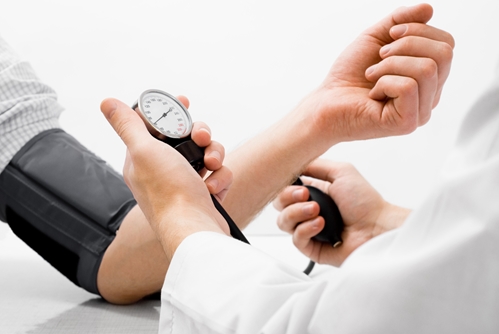Study proves EHRs can identify patients with undiagnosed hypertension
Hypertension, or high blood pressure, is often called a silent killer because those who have the condition rarely show any effects. A study, named "A Technology-Based Quality Innovation to Identify Undiagnosed Hypertension Among Active Primary Care Patients," was published in the 2014 July/August issue of the Annals of Family Medicine. The study showed that hypertension affects 33 percent of American adults aged 20 and older. About 18.5 percent of adults with hypertension are unaware that they have the condition. Northwestern Medicine researchers who conducted the study found that reviewing electronic health records and utilizing algorithms can identify patients with undiagnosed hypertension at a high accuracy rate.
"Hypertension is easy to miss if someone is seeing multiple physicians," said study co-author David W. Baker, M.D., M.P.H., chief of internal medicine and geriatrics at Northwestern Memorial Hospital and Northwestern University Feinberg School of Medicine. "A patient may see one doctor who thinks the blood pressure is due to the patient not feeling well that day and then see another doctor for a different problem who thinks the blood pressure is high because the patient was hurrying to make the appointment. No one puts all of these readings together and realizes a person's blood pressure is always elevated."
The study used three algorithms to parse through data collected by EHRs. The process identified 1,432 patients who were at risk of having undiagnosed hypertension. Researchers then established a two-phase testing protocol to determine whether or not the patients had the medical condition.
Phase one collected data
In the first phase, 475 patients were invited to physicians' offices to complete an automated office blood pressure test within six months of being identified as having undiagnosed hypertension by the algorithm. A medical assistant started the exam and left the patient alone while the AOBP device collected six blood pressure readings at one-minute intervals. To mitigate the white coat effect, the first reading was discarded and the five other readings were averaged to provide one accurate result. According to Blood Pressure UK, the white coat effect means that when a patient's blood pressure is taken in a medical setting, the reading is generally higher. The study stated that the average number from an AOBP test is more accurate than a single manual office blood pressure test.
Phase two completed the data analysis
For the second phase of the study, 1,033 patients from the initial 1,432 remained active participants and were observed over a two-year period. Their primary care physicians would receive a notification on a patient's EHR that suggested a medical assistant or physician should conduct an AOBP test. Seventy-two percent, or 740, of these patients were then classified based on this second test. Only 89 of them had normal blood pressure, while 361 were diagnosed with hypertension and 290 had either prehypertension, elevated blood pressure or white coat hypertension.
Because the study successfully identified patients at risk of hypertension based on EHRs and the three algorithms, these methods are still being used as part of an ongoing quality improvement initiative at Northwestern Medicine. The authors of the study stated that a similar method may be applicable to other undiagnosed chronic diseases as well.



